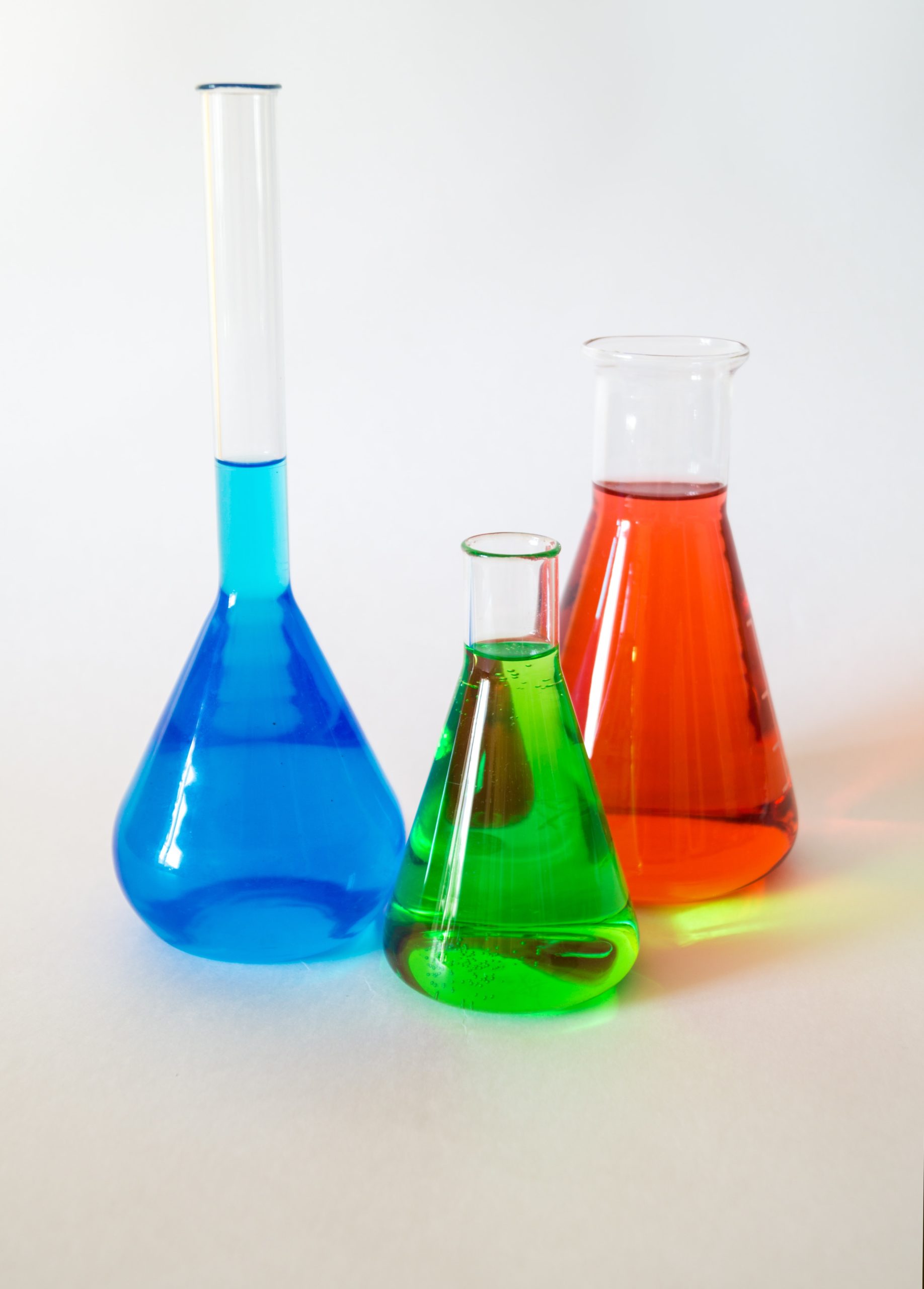Dirty Dozen Chemicals to Avoid for your Hormones, part 1
 There is no end to the tricks that endocrine disruptors can play on our bodies: increasing production of certain hormones, decreasing production of others, imitating hormones, turning one hormone into another, interfering with hormone signalling, telling cells to die prematurely, competing with essential nutrients, binding to essential hormones, accumulating in organs that produce hormones. This imbalance has created sleep disorders, anxiety, weight gain, skin problems, cancers, and much more.
There is no end to the tricks that endocrine disruptors can play on our bodies: increasing production of certain hormones, decreasing production of others, imitating hormones, turning one hormone into another, interfering with hormone signalling, telling cells to die prematurely, competing with essential nutrients, binding to essential hormones, accumulating in organs that produce hormones. This imbalance has created sleep disorders, anxiety, weight gain, skin problems, cancers, and much more.
Here are 12 of the worst hormone disruptors, how they do their dirty deeds, and some tips on how to avoid them.
ATRAZINE
What happens when you introduce highly toxic chemicals into nature and turn your back? For one thing, feminization of male frogs. That’s right; researchers have found that exposure to even low levels of atrazine can turn male frogs into females that produce completely viable eggs. Atrazine is an herbicide that is widely used on a majority of corn crops in the United States, and consequently it’s a pervasive drinking water contaminant. Atrazine has been linked to breast tumours, delaying puberty and causing prostate inflammation in animals. Some research has linked it to prostate cancer in humans.
HOW TO AVOID IT?
Buy organic produce and get a drinking water filter certified to remove atrazine. For help finding such a filter, check out EWG’s buying guide: ewg.org/report/ewgs-water-filter-buying-guide
BPA
Some may say that imitation is the sincerest form of flattery, but do you really want a chemical used in plastics imitating the sex hormone estrogen in your body?….NO!! Unfortunately, this synthetic hormone can trick the body into thinking it’s the real thing- and the results aren’t pretty. BPA has been linked to everything from breast and other cancers to reproductive problems, obesity, early puberty and heart disease. According to government tests, 93% of Americans have BPA in their bodies.
HOW TO AVOID IT?
Go fresh instead of canned- many food cans have BPA in their linings- or research which companies don’t use BPA or similar chemicals in their products, EDEN Organics is one such company. Say no to receipts, since thermal paper is often coated with BPA. Avoid plastics marked with “PC” (polycarbonate), or recycling label #7. Not all of these plastics contain BPA, but many do and its better safe than sorry when it comes to keeping synthetic hormones out of your body. Plastic water bottles can contain BPA and it is advisable to avoid these. For more tips, check out: ewg.org/bpa
 DIOXINS
DIOXINS
Dioxins are multi-taskers…but not in a good way! They form during many industrial processes when chlorine and bromine are burned in the presence of carbon and oxygen. Dioxins can disrupt the delicate signalling systems of male and female sex hormones in the body. This is a bad thing! HERE’S WHY: Recent research has shown that exposure to low levels of dioxin in the womb and early in life can permanently affect sperm quality and lower sperm count in men during their prime reproductive years. But that’s not all! Dioxins are very long-lived, build up both in the body and in the food chain, are powerful carcinogens and can affect the immune and reproductive systems.
HOW TO AVOID IT?
That’s pretty difficult, since the ongoing industrial release of dioxins has meant that the American food supply is widely contaminated. Products including meat, fish, milk, eggs and butter are most likely to be contaminated. You can cut down on your exposure by eating fewer animal products.
PERCHLORATE
Who needs foods tainted with rocket fuel?! That’s right, perchlorate, a component in rocket fuel, contaminates much of our produce and milk, according to EWG and government test data. When perchlorate gets in your body it competes with the nutrient iodine, which the thyroid gland needs to make thyroid hormones. Basically, this means that if you ingest too much of it you can end up altering your thyroid hormone balance. This is important because these hormones regulate metabolism in adults and are critical for proper brain and organ development in infants and young children.
HOW TO AVOID IT?
You can reduce perchlorate in your drinking water by using a reverse osmosis filter. (You can get help finding one here: www.ewg.org/report-ewgs-water-filter-buying-guide). As for food, it’s pretty much impossible to avoid perchlorate, but you can reduce its potential effects on you by making sure you’re getting enough iodine in your diet. Using iodized salt is one good way.
 PHTHALATES
PHTHALATES
Did you know that a specific signal programs cells in your body to die? It’s normal and healthy for 50 billion cells in your body to die every day! But studies have shown that chemicals called phthalates can trigger what’s known as “death-introducing signalling” in testicular cells, making them die sooner than they should have. Yep, that’s cell death -in your man parts. If that’s not enough, studies have linked phthalates to hormone changes, lower sperm count, less mobile sperm, birth defects in the male reproductive system, obesity, diabetes and thyroid irregularities.
HOW TO AVOID IT?
A good place to start is to avoid plastic food containers, children’s toys (some phthalates are already banned in kid’s products), and plastic wrap made from PVC, which has the recycling label#3. Some personal care products also contain phthalates, so read the labels and avoid products that simply list added ”fragrance”, since this catch-all term sometimes means hidden phthalates. Find phthalate-free personal care products with EWG’s skin Deep Database: ewg.org/skindeep
FIRE RETARDANTS
What do breast milk and polar bears have in common? In 1999, Swedish scientists studying women’s breast milk discovered something totally unexpected: The milk contained an endocrine-disrupting chemical found in fire retardants, and the levels have been doubling every five years since 1972! These incredibly persistent chemicals, known as polybrominated diphenyl ethers or PBDE’s, have since been found to contaminate the bodies of people and wildlife around the globe- even polar bears. These chemicals can imitate thyroid hormones and disrupt their activity. This can lead to lower IQ, among other significant health effects. Several kinds of PBDE’s have now been phased out, but this doesn’t mean that toxic fire retardants have gone away. PBDE’s are incredibly persistent, so they’re going to be contaminating people and wildlife for decades to come.
HOW TO AVOID IT?
 It’s virtually impossible, but passing better toxic chemical laws that require chemicals to be tested before they go on the market would help reduce our exposure. A few things that we can try in the meantime include using a vacuum with a HEPA filter, which can cut down the toxic-laden house dust, avoid re-upholstering foam furniture and taking care when replacing old carpet (the padding underneath may contain PBDE’S). Find more tips here ewg.org/pbdefree
It’s virtually impossible, but passing better toxic chemical laws that require chemicals to be tested before they go on the market would help reduce our exposure. A few things that we can try in the meantime include using a vacuum with a HEPA filter, which can cut down the toxic-laden house dust, avoid re-upholstering foam furniture and taking care when replacing old carpet (the padding underneath may contain PBDE’S). Find more tips here ewg.org/pbdefree
This is part 1 of the endocrine dirty dozen list. Look out for part 2!
If you want to know more about how to know your levels or how to detox your exposures, download the Healthy Home & Body Detoxification Guide from Natural Terrain. Click here to download.
Photos by Alex Kondratiev on Unsplash, by Kai Dahms on Unsplash



